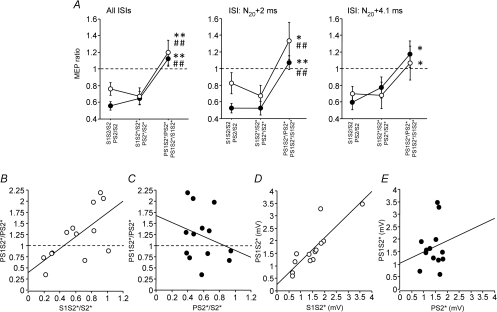Figure 4. Interactions between SICI and SAI – effects of the interval between P and S2 (Experiment 2).
A, SICI alone (S1S2/S2, S1S2*/S2*) vs. SICI with co-applied P (PS1S2*/PS2*, open circles) and SAI alone (PS2/S2, PS2*/S2*) vs. SAI with co-applied S1 (PS1S2*/S1S2*, filled circles) are shown as grand average across the two tested ISIs between P and S2, and separately for the single ISIs (N20+ 2 ms, N20+ 4.1 ms). Values less than 1 (dashed lines) indicate inhibition. S1 inhibited PS2* significantly less than S2 or S2* alone, irrespective of ISI. In some instances, PS1S2*/PS2* even resulted in values larger than 1, indicating disinhibition. Similarly, P inhibited S1S2* significantly less than S2 or S2* alone, irrespective of ISI. Again, in some instances PS1S2*/S1S2* resulted in values larger than 1, indicating disinhibition. Significant differences between PS1S2*/PS2* and S1S2/S2, or between PS1S2*/S1S2* and PS2/S2 are indicated by * (P < 0.05) or ** (P < 0.01). Significant differences between PS1S2*/PS2* and S1S2*/S2*, or between PS1S2*/S1S2* and PS2*/S2* are indicated by # (P < 0.05) or ## (P < 0.01). All data are means ± 1 s.e.m. of 7 subjects. B, SICI alone (S1S2*/S2*) is plotted against SICI with co-applied P (PS1S2*/PS2*). Each data point is from one single subject (n= 7) and one ISI between P and S2 (2 different ISIs). Values less than 1 (dashed line) indicate inhibition. The thick continuous line is the regression line. C, SAI alone (PS2*/S2*) is plotted against SAI with co-applied S1 (PS1S2*/S1S2*). D, MEP amplitude (in mV) of S1S2* is plotted against that of PS1S2*. E, MEP amplitude (in mV) of PS2* is plotted against that of PS1S2*. Arrangement and conventions in C–E are otherwise the same as in B.

